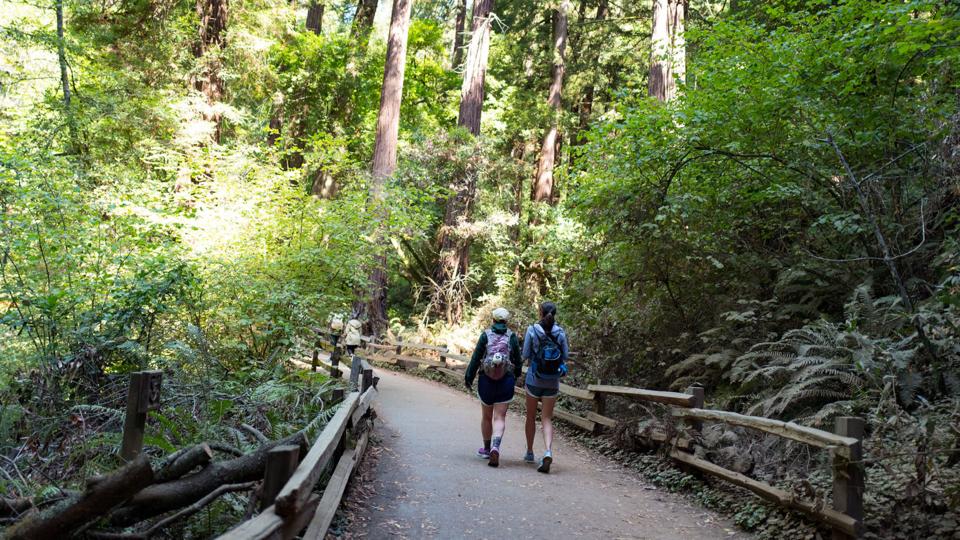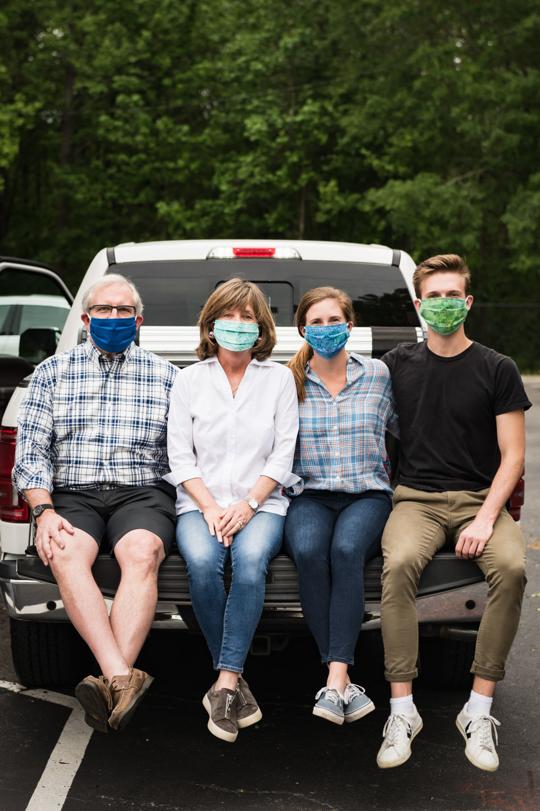
Why walking makes you a better worker
Article Published by: bbc.com
There’s plenty of value in shoehorning outside time into a busy work schedule. Philippa Fogarty explains.
“Come to the woods, for here is rest,” wrote John Muir, the 19th Century Scottish-American naturalist who was one of the earliest advocates of US national parks.
Muir spent large chunks of his life exploring Yosemite and the Sierra Nevada, and wrote prolifically of his belief in nature’s nourishing role, saying: “Everybody needs beauty as well as bread, places to play in and pray in, where nature may heal and give strength to body and soul alike.”
And it seems like Muir was on to something: there is mounting evidence that spending time in nature makes us healthier and happier.
It’s something many people feel instinctively. But we’re busy at work, distracted by technology and often live in urban environments far from wild spaces. We also don’t get out much: the average American, for example, spends about 90% of their life indoors.
But what happens if we make time for an hour outside each day? Does it matter where we go, and what’s the value of shoehorning outside time into a busy work schedule?
What does nature do for you?
There are some obvious benefits to going outside. You’ll have to stand up and move, which is beneficial if most of your day involves sitting in front of a screen. Research shows short breaks can boost engagement at work, and a quick break in natural light will deliver a shot of vitamin D.
So far, so positive. But based on a growing body of research comparing how we react in urban and natural settings, the kind of open-air environment you seek out matters too: green and blue spaces trump busy city streets.
“Generally the research tells us that when people are exposed to the natural environment and natural features, they tend to have a reduced stress response. When you are out in nature you have lower blood pressure, better heart rate variability, better mood,” says Lisa Nisbet, associate professor in the psychology department at Canada’s Trent University.
“There’s also a lot of work on the psychological benefits of being in nature – on wellbeing and on cognitive functioning. In general people are happier in nature. Happiness is a very broad concept and so we measure things like positive and negative emotions, people’s sense of vitality and being energised and also how satisfied they are with life,” she says. “When people are immersed in natural places, even in urban nature, people tend to have more positive emotions and vitality than when they are indoors.”
The idea that nature is good for us has been gaining ground since the 1980s. First came the biophilia hypothesis, the theory that humans have an innate desire to connect with nature, followed by shinrin-yoku, the Japanese concept that absorbing the atmosphere in forests can benefit your health. Researchers of shinrin-yoku have since identified a raft of physiological and psychological benefits, while globally studies suggest time in nature can, for example, restore our ability to focus, increase creativity, lower the risk of depression and even help us live longer.
Of course, many of us live in cities with no ready access to forests or wilderness. But as Nisbet says, it doesn’t have to be a forest – multiple studies have shown that green environments in cities have beneficial effects.
A five-minute dose
Jo Barton, of the School of Sport, Rehabilitation and Exercise Sciences at the University of Essex in the UK, works on “green exercise”, the idea that being active in nature delivers health benefits. In one study, she looked at what “dose” of nature was needed to deliver a mental health boost.
When it came to self-esteem and mood, the biggest improvements came in the first five minutes of exposure to nature
The longer, the better, you might assume. But in the study of 1,252 participants engaged in activities like walking and gardening, Barton found that when it came to self-esteem and mood, the biggest improvements came in the first five minutes of exposure to nature.
“Clearly we saw positive effects for all durations but the biggest was those first five minutes, just when you are looking at psychological health,” she says.
She believes that the rapid boost may be driven by the transition to a green environment, and the way nature helps us switch from voluntary attention, which requires focus and energy, to involuntary attention, which requires minimal effort, allowing us to recover from mental fatigue. “Exposure to nature is really good at facilitating those changes very quickly,” she says.
Barton also found that the results were comparable across urban green, countryside and woodland environments, while the presence of water generated greater improvements. The take-home for city dwellers is that if you can’t get to a rural idyll for a hike, a short trip to your local park will pay dividends.
It may also be a productivity hack. One study in Finland examining how lunch-hour activities help workers rebound from job stress suggests a short nature hit can boost performance. Researchers asked some people to walk for 15 minutes in the park and others to do indoor relaxation exercises for two weeks in spring and autumn, while a control group continued with lunchbreaks as normal. The results in the autumn intervention were interesting.
“To our surprise these park walks were as effective and as beneficial as these relaxation exercises,” says Kalevi Korpela, professor of psychology at Finland’s Tampere University. The park-walking group felt more relaxed and detached from work, and enjoyed the break more. “The relaxation group experienced only an increase in their feelings of relaxation.”
Both groups showed higher levels of concentration and lower strain in the afternoon. Both activities, the study concluded, “may assist employees in replenishing the resources needed to perform well on the job during the working day”.
Underestimating nature’s power
But it seems the idea that nature packs a punch isn’t getting through to everyone: one recent US survey found that 35% of office workers spend just 15 minutes outside each day.
Lisa Nisbet suggests that a failure to appreciate how good nature is for us may be partly to blame. She carried out a study at Carleton University in Ottawa, where students use tunnels to cross the campus in winter. Participants were asked to take a short walk either via the tunnels or outside on a route that included a canal-side path.
“We found that people were significantly happier when they walked outdoors, even for 15 minutes,” says Nisbet. But that raised a question: why weren’t they doing it more? Why did people still use the tunnels in warmer weather, given they were no more direct? Nisbet then looked at people’s expectations of walks in different environments, asking them to predict how they would feel.
“When they asked people after the walk how they felt, people had underestimated how happy they were when they were on the outdoor walk. In other words, people thought it would be good, but it was significantly better than they expected,” she found.
She believes that if we start seeking out nature, it can quickly become an important part of our lives. “Because of the mood-boosting effects of nature, it should become reinforcing. If we’re experiencing things that make us happy, then we’ll be motivated to seek out those places more.”
Walk and talk?
So what simple ways are there to make nature part of a workday routine? If you work at a tech giant, then problem solved: Microsoft has built treehouse meeting areas for employees, Amazon has The Spheres, three plant-filled domes where 800 employees can “think and work differently”, and Adobe has built a running track on the roof of its London office.
But there are cheaper options. “What we tend to promote here is the walk-and-talk meeting,” says Barton. “Not eating into your work time, just changing where you meet so you’re outdoors.”
Windows with a view of nature can improve productivity and wellbeing, she adds, as can having plants in the workplace. Some companies are also adding outdoor meeting rooms or pods – US retailer LL Bean attracted attention when it launched its outdoor pop-up work spaces last year.
But workers should also introduce small, regular exposures that become a habit – like parking further away from work and walking in via a green space, or eating lunch in the park. “I think that means breaking it down into smaller chunks rather than finding a whole hour in one go,” says Barton. It seems more manageable if it’s broken down, she says, and it’s about breaking up the nature time throughout the day so you are maximising the benefits.
Korpela notes that short interventions – like walking in a park for two weeks – provide short-term benefits; for long-term gains the activity needs to become entrenched. And he says research indicates that when it comes to long-term wellbeing, physical activity in nature trumps having greenery or a nature view at work.
But he says even short-term effects may be important for preventing the accumulation of long-term stress. “Short-term exposures are like cutting the effects of stress for a while and this itself may have positive long-term effects. More studies on this are needed.”
Either way, it’s clear that seeking out natural settings amid the concrete of modern life is well worth doing. Or, as John Muir put it: “Keep close to nature’s heart… and break clear away, once in a while… Wash your spirit clean.”
About Scott Livengood
Scott Livengood is the owner and CEO of Dewey’s Bakery, Inc., a commercial wholesale bakery with a respected national brand of ultra premium cookies and crackers.
Previously, Scott worked at Krispy Kreme Doughnuts for 27 years, starting as a trainee in 1977. He was appointed President of the company in 1992, then CEO and Chairman of the Board.
Scott has served on numerous boards including the Carter Center, the Calloway School of Business and the Babcock School of Management, Habitat for Humanity of Forsyth County, and the Winston-Salem Chamber of Commerce.
He started a new business, StoryWork International, in 2016 with Richard Stone. The signature achievement to date is LivingStories, a story-based program for improved patient experiences and outcomes in partnership with Novant Health.




